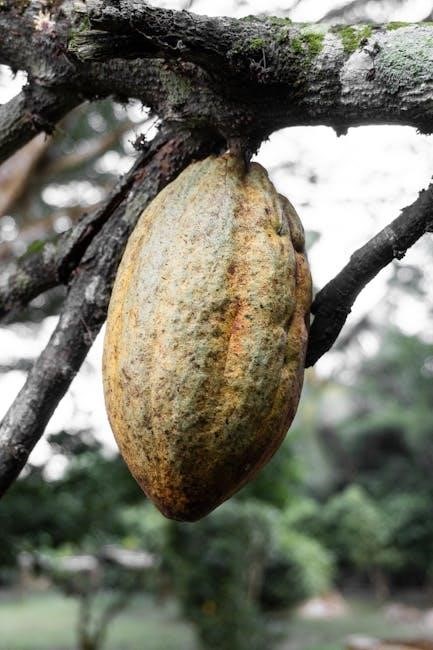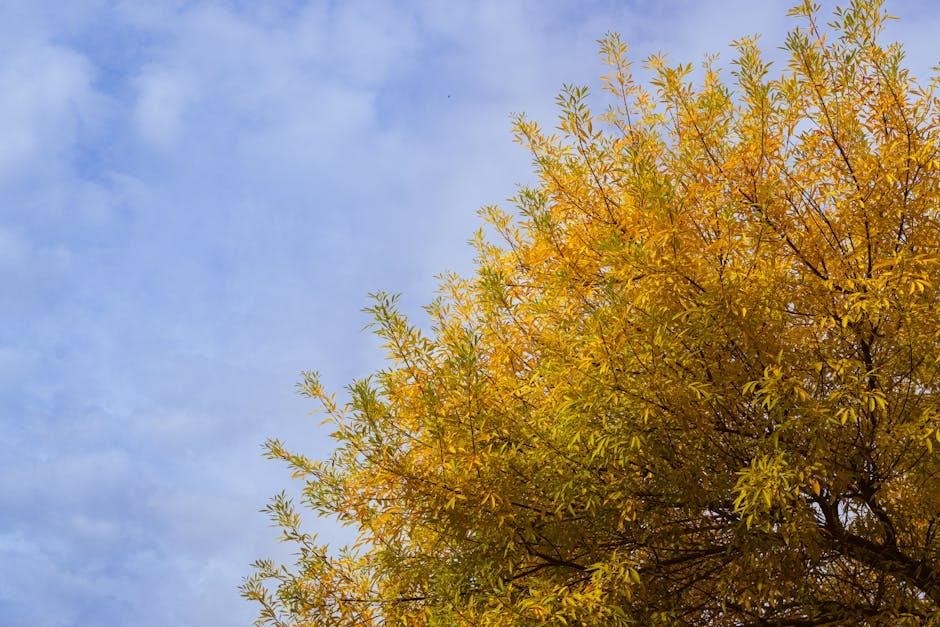Central Texas offers a unique climate for gardening, with warm summers and mild winters; Start seeds for tomatoes, peppers, and squash in late February. Plant beans, carrots, and okra by early March. Use compost when soil reaches 50°F for optimal growth. Local nurseries like Natural Gardener provide tailored advice and supplies. Check the Texas A&M AgriLife Extension for specific planting guides and soil testing.

Climate and Planting Zones in Central Texas
Central Texas falls within USDA Hardiness Zones 8 and 9, characterized by hot summers and mild winters. The region experiences a subtropical climate, with average temperatures ranging from 35°F in winter to 95°F in summer. The growing season is long, typically spanning over 200 frost-free days annually. The last frost date in eastern Central Texas is around late March, while western areas see earlier dates, often by early February. This variation allows gardeners to plan accordingly based on their specific location.
Valentine’s Day marks the traditional start of spring gardening in Central Texas, signaling the time to begin planting cool-season crops like spinach, lettuce, and broccoli. The region’s climate also supports warm-season crops such as tomatoes, peppers, and squash, which thrive in the area’s long, hot summers. Understanding these zones and seasonal patterns is essential for selecting the right plants and timing planting activities effectively. Gardeners in Central Texas can enjoy year-round growth by adapting to these climatic conditions.
Best Plants for Central Texas

Central Texas’s climate supports a wide variety of plants, from vegetables to drought-tolerant natives. Vegetables like tomatoes, peppers, squash, beans, carrots, okra, onions, and watermelon thrive in the region’s hot summers. Cool-season crops such as spinach, lettuce, broccoli, and kale do well in the mild winters and early springs.
Native plants are ideal for landscaping, as they are adapted to the local conditions. Texas Sage, Hill Country Penstemon, and Black-Eyed Susan are popular choices for their beauty and low water needs. These plants are not only resilient but also attract pollinators like bees and butterflies.
For gardeners, the Texas A&M AgriLife Extension and local nurseries like the Natural Gardener provide excellent resources for selecting the best plants for specific soil types and sunlight conditions; By choosing plants suited to Central Texas, gardeners can enjoy vibrant, thriving gardens year-round.
Soil Preparation Tips
Preparing the soil is essential for successful gardening in Central Texas. Start by testing your soil to determine its pH and nutrient levels. Contact the Texas A&M AgriLife Extension for professional soil testing. Once you have your results, amend the soil accordingly. For most plants, a slightly alkaline to neutral soil pH (6.5–7.5) is ideal.
Central Texas soils often lack organic matter, so incorporate compost or well-rotted manure to improve soil structure and fertility. Wait until the soil warms to at least 50°F before applying plant-based fertilizers, as colder soils cannot decompose them effectively. Mulch lightly to retain moisture and regulate soil temperature.
For clay-heavy soils, add organic matter like compost or sand to improve drainage. Sandy soils benefit from compost and mulch to retain water and nutrients. Avoid over-tilling, as this can damage soil structure. Instead, mix amendments into the top 6–8 inches of soil. Finally, consider using compost tea to enhance microbial activity and promote healthy plant growth.
Seasonal Planting Guide
Central Texas has distinct planting seasons, each offering opportunities to grow a variety of crops. In early spring (February–March), start seeds indoors for tomatoes, peppers, and squash. Directly sow beans, carrots, and okra in late February. By March, plant warm-season crops like corn and zucchini. Summer is ideal for heat-tolerant plants such as okra, southern peas, and squash. Plant sweet potatoes when soil warms to at least 65°F.
In fall (August–September), transition to cool-season crops like broccoli, kale, and spinach. Plant these 8 weeks before the first frost. Incorporate compost into the soil before planting to enhance fertility. Winter gardening in Central Texas is possible, with crops like spinach, lettuces, and radishes thriving in the mild climate. Start seeds for these in late summer or early fall.
Always check the specific days to maturity for each variety and plan accordingly. Rotate crops annually to maintain soil health and prevent pests. For more detailed timing, consult the Texas A&M AgriLife Extension’s Vegetable Planting Guide for Central Texas.
Gardening Tools and Resources
Gardening in Central Texas requires the right tools and resources to ensure success. Local nurseries like the Natural Gardener, Shoal Creek, and Great Outdoors offer expert advice and high-quality plants tailored to the region. The Texas A&M AgriLife Extension provides comprehensive guides, including the Vegetable Planting Guide for Central Texas, which outlines optimal planting times and soil preparation tips.
Essential gardening tools include gloves, trowels, shovels, and mulching equipment. Soil testing kits are crucial for determining nutrient levels and pH balance. Water conservation tools, such as soaker hoses and rain barrels, are highly recommended due to the region’s unpredictable rainfall.
Plant-based fertilizers like cottonseed meal are effective once the soil reaches 50°F. Compost and organic mulch improve soil health and retain moisture. For pest control, natural options like neem oil and diatomaceous earth are widely available. Local hardware stores and online platforms offer these supplies, ensuring gardeners have everything needed to thrive in Central Texas’s unique climate.

Pest Control and Maintenance

Gardening in Central Texas requires effective pest control to protect plants from common pests like aphids, caterpillars, and whiteflies. Organic solutions such as neem oil and diatomaceous earth are popular choices for managing infestations. Regularly inspecting plants and maintaining clean garden beds can prevent pest buildup.
Encourage beneficial insects like ladybugs and lacewings by planting native flowers that attract them. Crop rotation and companion planting are also effective strategies to deter pests naturally. For severe infestations, consult local nurseries or the Texas A&M AgriLife Extension for guidance on integrated pest management techniques.
Proper watering practices, such as avoiding overhead watering to prevent fungal diseases, are essential. Mulching helps retain moisture and suppress weeds, reducing the need for herbicides. Regular maintenance, including pruning and removing dead plant material, ensures a healthy and thriving garden in Central Texas’s challenging climate.
Water Conservation Techniques
Water conservation is essential for gardening in Central Texas, where droughts and hot summers are common. Use drip irrigation to deliver water directly to plant roots, reducing evaporation and runoff. Mulch around plants to retain soil moisture and suppress weeds. Harvest rainwater using barrels or tanks to irrigate plants during dry spells.
Choose drought-tolerant plants native to Central Texas, as they require less water once established. Avoid overwatering by checking soil moisture before irrigating. Water plants in the early morning or evening to minimize evaporation. Consider using soil conditioners to improve water retention in sandy or clay soils.
Install moisture sensors or meters to monitor soil hydration levels accurately. Use graywater, such as water from sinks or washing machines, for irrigation, provided it’s treated properly. Group plants with similar watering needs to optimize irrigation efficiency. These techniques help maintain a thriving garden while conserving water in Central Texas’s challenging climate.
Local Nurseries and Suppliers
Central Texas is home to a variety of excellent local nurseries and suppliers that cater to gardeners’ needs. The Natural Gardener, Shoal Creek Nursery, and The Great Outdoors are popular choices, offering a wide selection of plants, tools, and expert advice. These nurseries specialize in plants adapted to the region’s climate, ensuring success for local gardeners.
Many local nurseries provide organic gardening supplies, such as compost, mulch, and natural fertilizers. They often host workshops and events to educate gardeners on topics like soil preparation, pest control, and water conservation. Supporting local businesses not only enhances your gardening experience but also promotes sustainability in the community.
Additionally, farmers’ markets and garden centers in Central Texas often carry native plants, seeds, and gardening tools. Visiting these suppliers allows you to connect with knowledgeable staff who understand the unique challenges and opportunities of gardening in the region. Their expertise can help you make informed decisions for your garden’s success.
Common Challenges and Solutions
Gardening in Central Texas comes with unique challenges. Drought and water scarcity are prominent issues, requiring efficient irrigation systems like drip irrigation or soaker hoses. Mulching helps retain soil moisture and regulate temperatures. Pests such as aphids, whiteflies, and nematodes can damage plants; organic pesticides and attracting beneficial insects are effective solutions. Soil quality varies, with alkaline soil being common. Regular soil testing and adding compost can improve fertility. Extreme heat and cold snaps pose risks, so using shade cloth in summer and protecting plants with blankets during cold snaps is essential. Weeds compete for water and nutrients; regular weeding and mulching can mitigate this. Wildlife, such as deer, can damage plants; using deterrents like motion-activated sprinklers or planting deer-resistant species helps. Lastly, nutrient deficiencies in soil can stunt growth; incorporating plant-based fertilizers and compost addresses this. By addressing these challenges proactively, gardeners can thrive in Central Texas’s dynamic environment.




